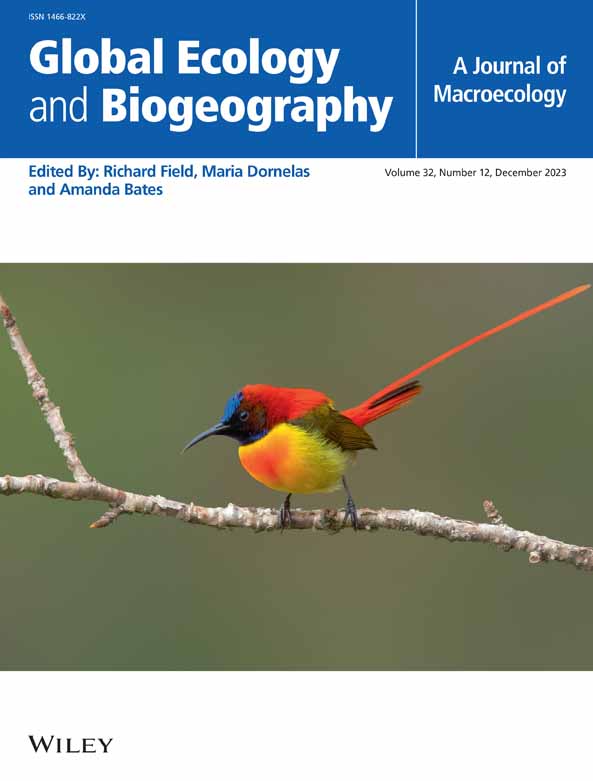A Quantitative Classification of the Geography of Non-Native Flora in the United States
Abstract
Aim
Non-native plants have the potential to harm ecosystems. Harm is classically related to their distribution and abundance, but this geographical information is often unknown. Here, we assess geographical commonness as a potential indicator of invasive status for non-native flora in the United States. Geographical commonness could inform invasion risk assessments across species and ecoregions.
Location
Conterminous United States.
Time Period
Through 2022.
Major Taxa Studied
Plants.
Methods
We compiled and standardised occurrence and abundance data from 14 spatial datasets and used this information to categorise non-native species as uncommon or common based on three dimensions of commonness: area of occupancy, habitat breadth and local abundance. To assess consistency in existing categorizations, we compared commonness to invasive status in the United States. We identified species with higher-than-expected abundance relative to their occupancy, habitat breadth or residence time. We calculated non-native plant richness within United States ecoregions and estimated unreported species based on rarefaction/extrapolation curves.
Results
This comprehensive database identified 1874 non-native plant species recorded in 4,844,963 locations. Of these, 1221 species were locally abundant (> 10% cover) in 797,759 unique locations. One thousand one hundred one non-native species (59%) achieved at least one dimension of commonness, including 565 species that achieved all three. Species with longer residence times tended to meet more dimensions of commonness. We identified 132 species with higher-than-expected abundance. Ecoregions in the central United States have the largest estimated numbers of unreported, abundant non-native plants.
Main Conclusions
A high proportion of non-native species have become common in the United States. However, existing categorizations of invasive species are not always consistent with species' abundance and distribution, even after considering residence time. Considering geographical commonness and higher-than-expected abundance revealed in this new dataset could support more consistent and proactive identification of invasive plants and lead to more efficient management practices.

 求助内容:
求助内容: 应助结果提醒方式:
应助结果提醒方式:


